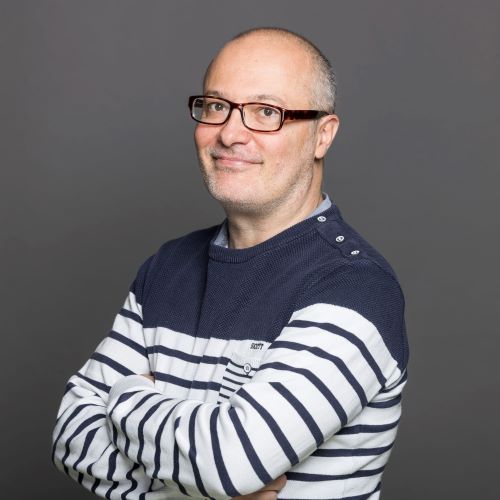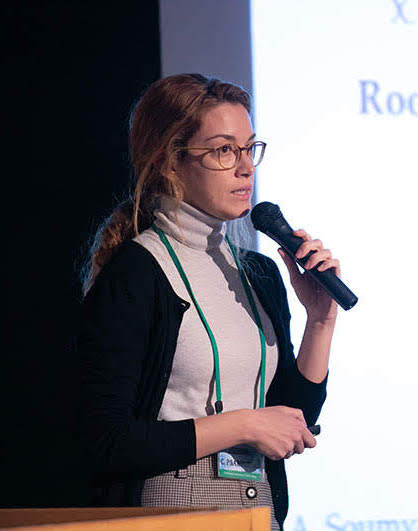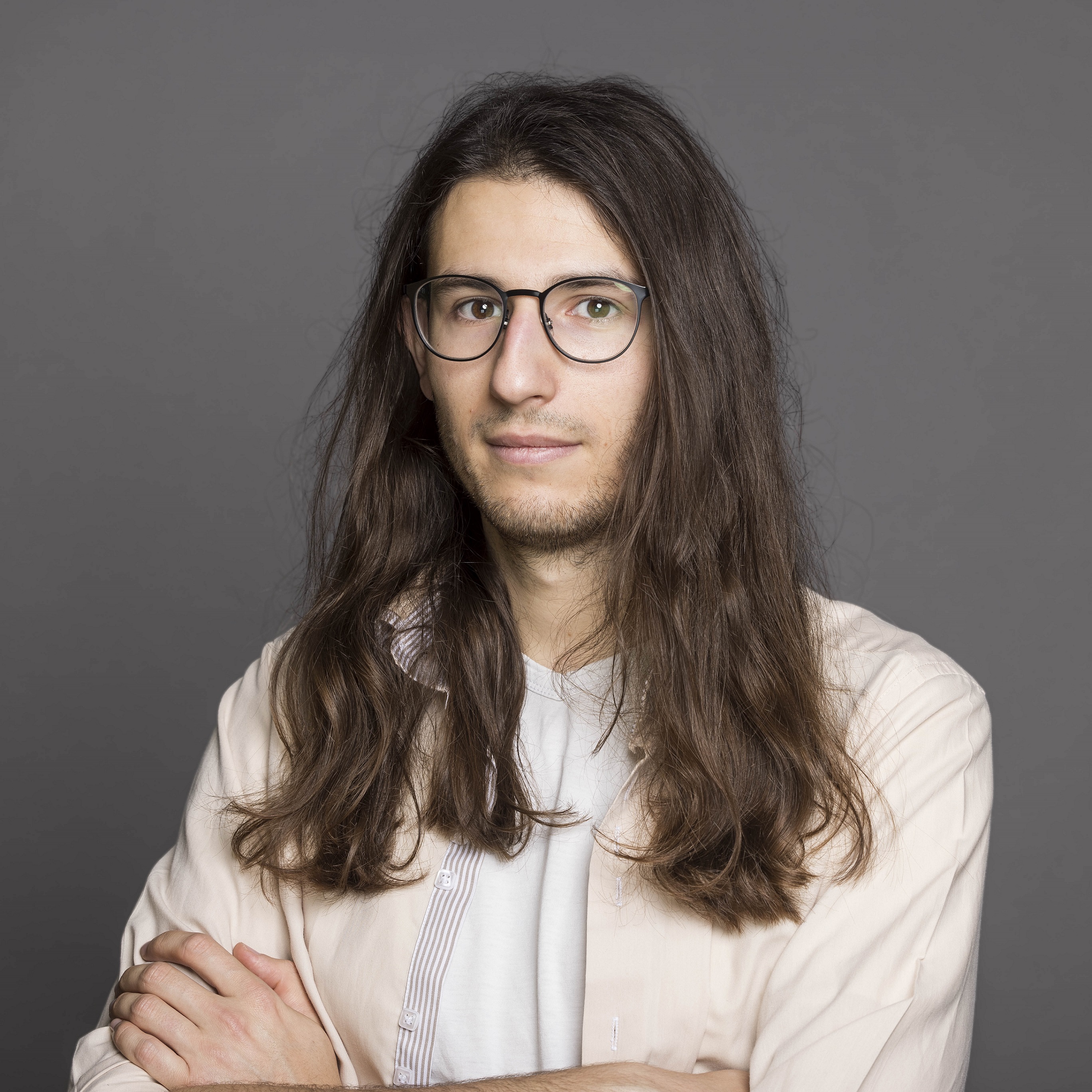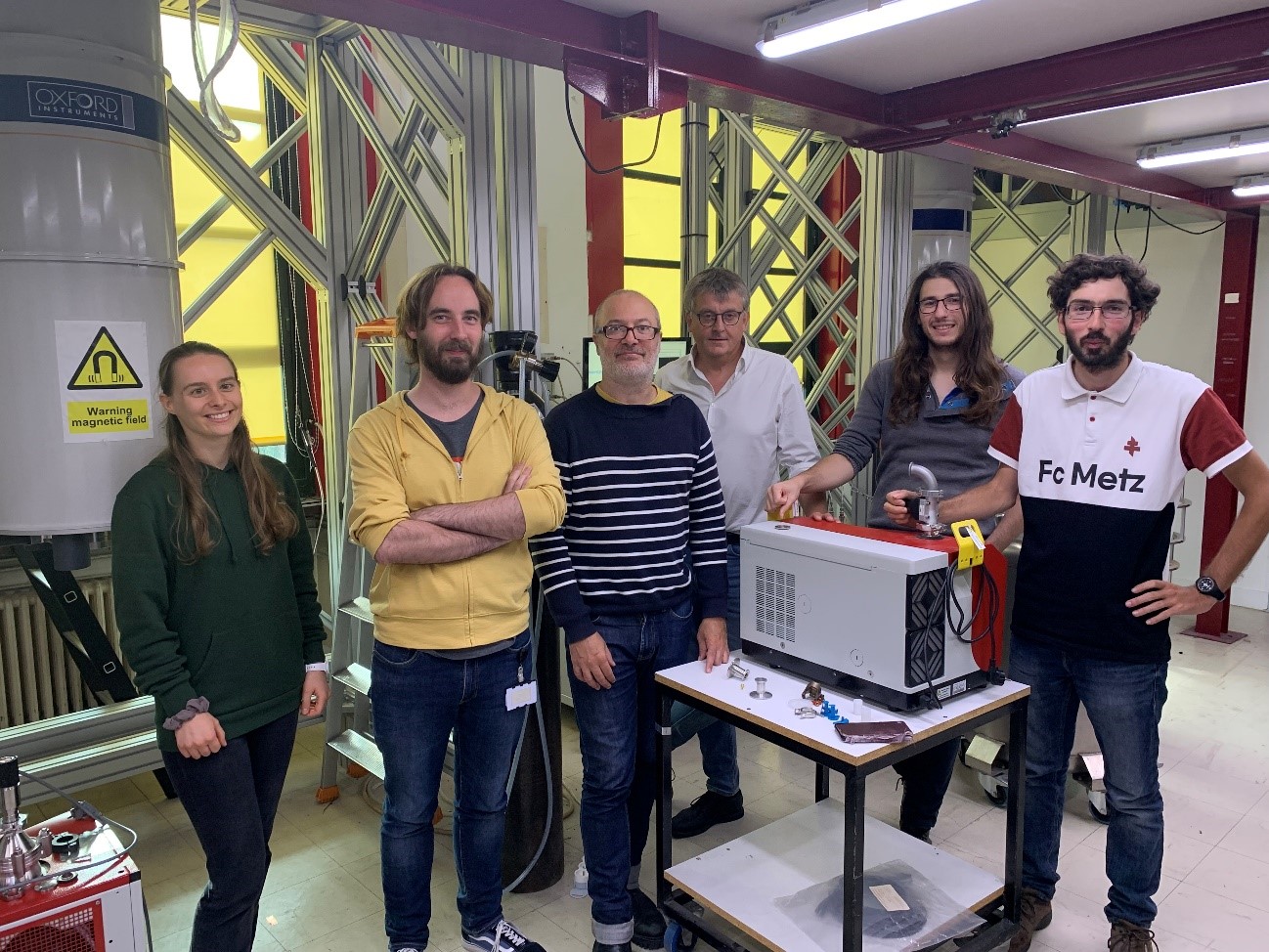
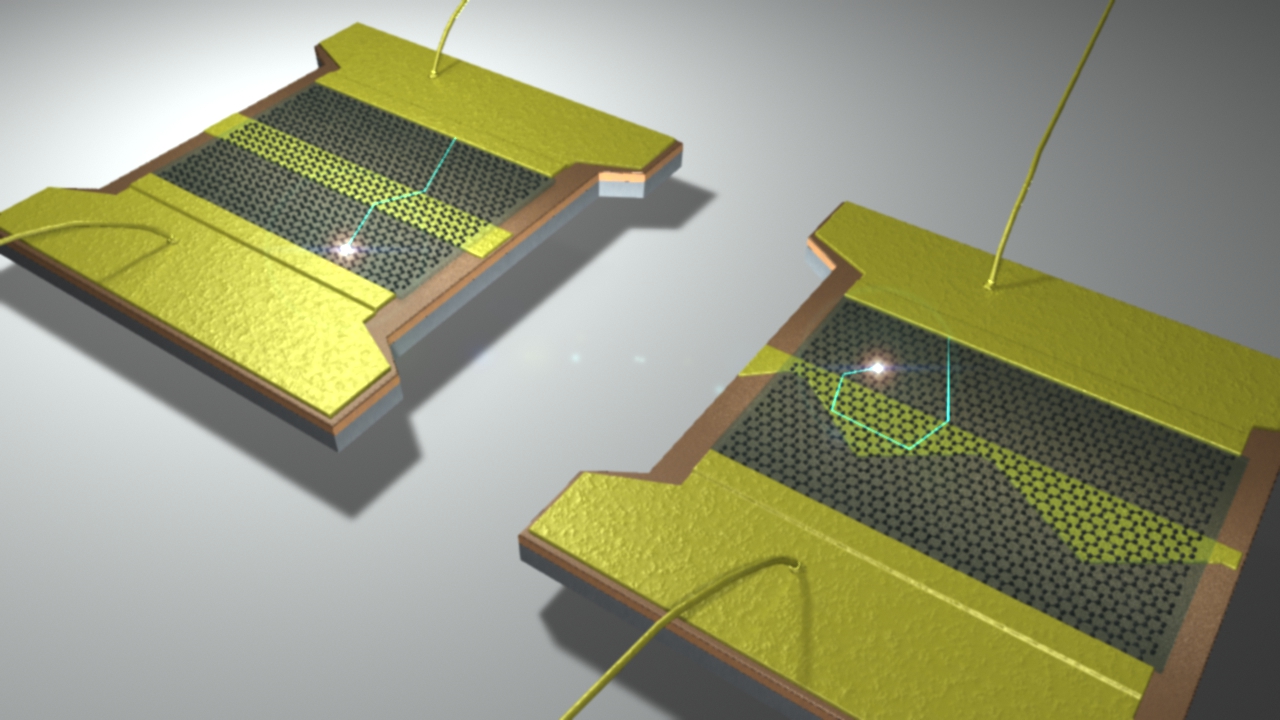
Dynamical transport in graphene
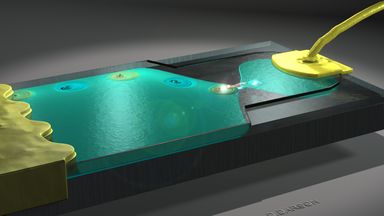
Electronic quantum optics
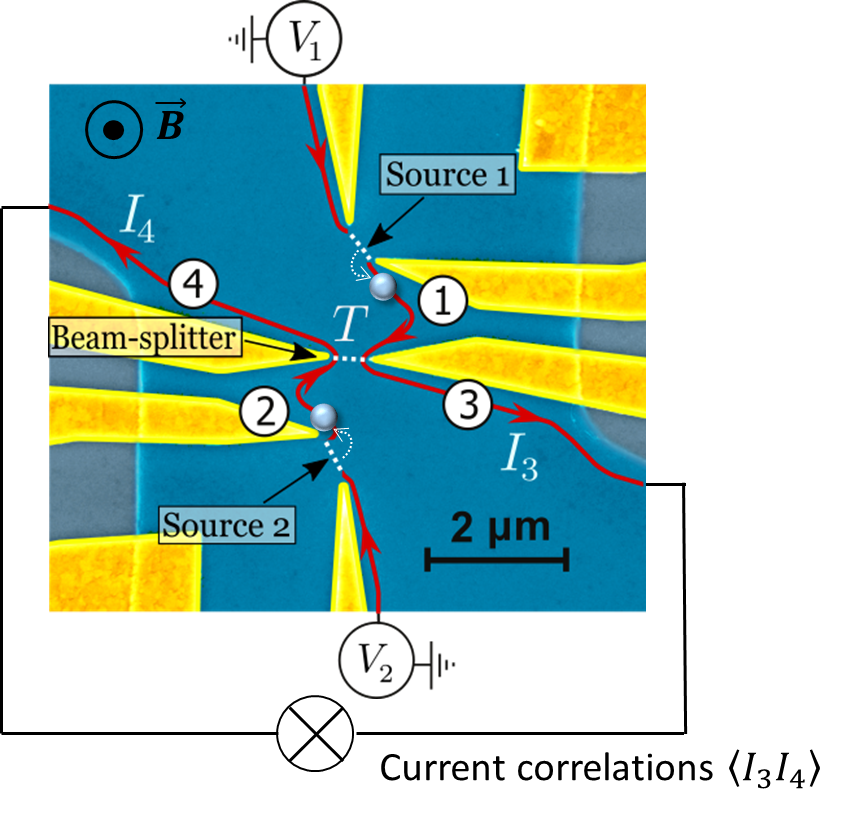
Anyon fractional statistics in mesoscopic colliders
Our team investigates the fractional statistics of anyons using the geometry of anyon colliders, where two dilute beams of anyons are generated at the input of an anyon beam splitter. We have focused so far on abelian anyons, for which the accumulated phase associated to the exchange of two particles can take arbitrary values between 0 (bosonic case) and π (fermionic case). We use high mobility GaAs/AlGaAs heterostructures under a strong magnetic field to reach the fractional quantum Hall effect whose elementary excitations are anyons. By sending anyon excitations towards a beam-splitter and by measuring the correlations between the output electrical currents, we can probe the tendency of anyons to bunch together at the splitter output, which provides information on their fractional statistics.
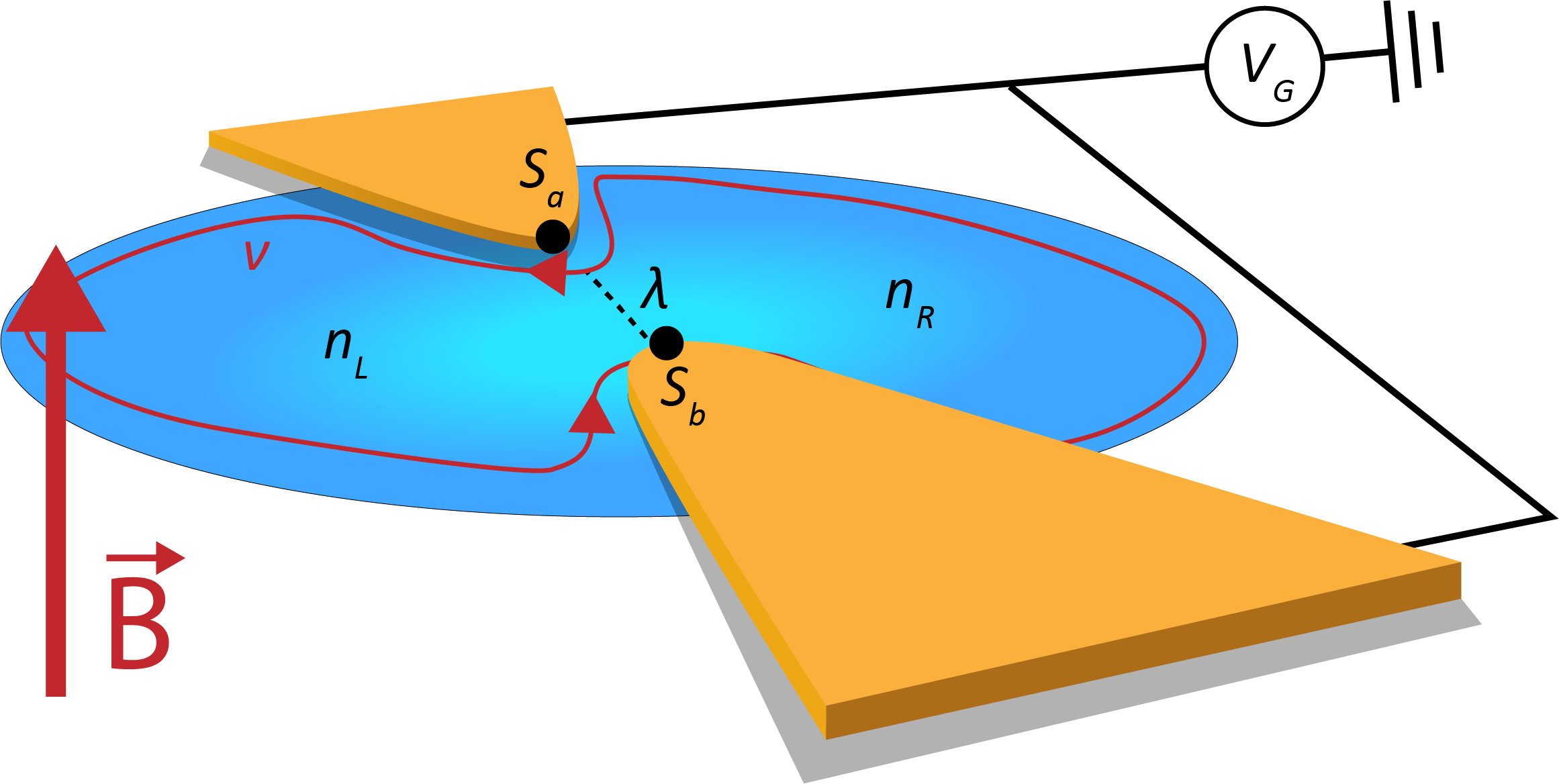
Resonators and radiofrequency interferometry in the quantum Hall effect
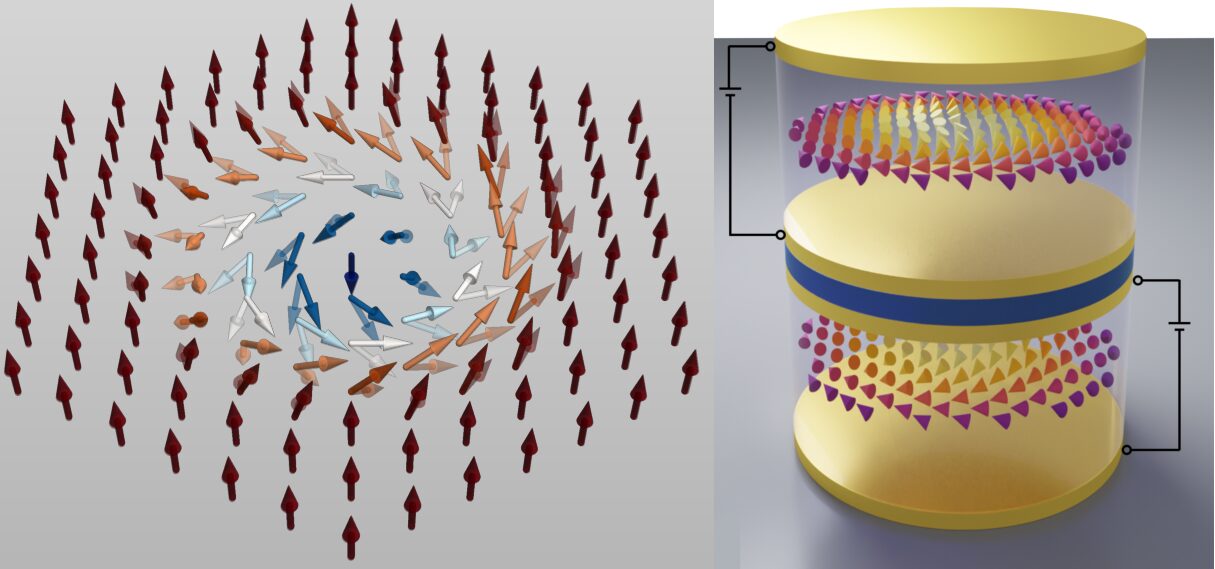
Quantum skyrmionics
Our team theoretically studies the quantum and nonequilibrium skyrmion dynamics with a focus on developing strategies for bringing a novel macroscopic qubit design based on magnetic skyrmions to fruition. In particular, we aim to understand the microscopic mechanisms that create noise, design schemes to control sources of decoherence built upon spectral engineering, study the coherent interaction of skyrmion qubits with other quantum modules, and achieve long-distance tunable qubit coupling.
- The personal webpages of the team members can be found on the directory.
Hiring
- Post-doc offer
- Proposition_stage_M2-2024-2025
- Contact Gwendal Feve or Gerbold Menard for more information.
Team members
Team leader
Permanent staff
Emeritus
Post-doctoral fellows
PhD students
Alumni
Bernard Plaçais, CNRS Senior scientist, founder and former head of the group, retired in 2023.
Aurélien Schmitt, PhD student, defended in 2023.
Alexandre Gourmelon, PhD student, defended in 2022.
Hugo Bartolomei, PhD student, defended in 2022.
Holger Graef, PhD student, defended in 2019.
Arthur Marguerite, PhD student, defended in 2017, current CNRS researcher at ESPCI.
Manohar Kumar, post-doc, currently researcher at Aalto university, Finland.
Rémi Bisognin, PhD student.
David Mele, post-doc, currently assistance professor at JUNA (Lille).
Quentin Wilmart, PhD Student, defended in 2015, currently researcher at CEA-LETTI (Grenoble).
Vincent Freulon, PhD student, defended in 2014.
Erwann Bocquillon, PhD student, defended in 2012, then CNRS researcher in the team (2016-2021), currently professor at Kölm university, Germany.
François Parmentier, PhD student, defended in 2010, currently CNRS researcher at CEA Saclay.











